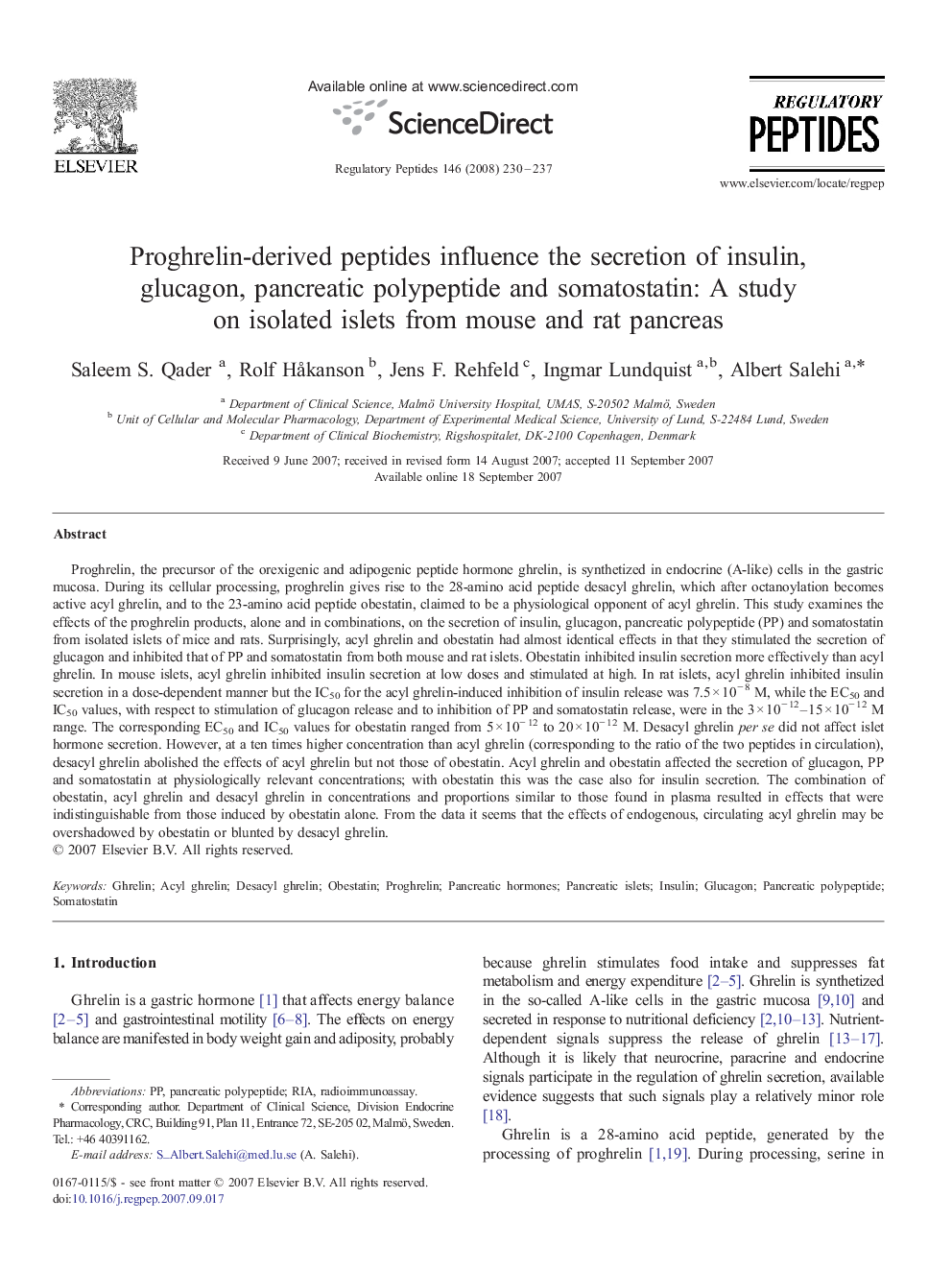| Article ID | Journal | Published Year | Pages | File Type |
|---|---|---|---|---|
| 2023245 | Regulatory Peptides | 2008 | 8 Pages |
Proghrelin, the precursor of the orexigenic and adipogenic peptide hormone ghrelin, is synthetized in endocrine (A-like) cells in the gastric mucosa. During its cellular processing, proghrelin gives rise to the 28-amino acid peptide desacyl ghrelin, which after octanoylation becomes active acyl ghrelin, and to the 23-amino acid peptide obestatin, claimed to be a physiological opponent of acyl ghrelin. This study examines the effects of the proghrelin products, alone and in combinations, on the secretion of insulin, glucagon, pancreatic polypeptide (PP) and somatostatin from isolated islets of mice and rats. Surprisingly, acyl ghrelin and obestatin had almost identical effects in that they stimulated the secretion of glucagon and inhibited that of PP and somatostatin from both mouse and rat islets. Obestatin inhibited insulin secretion more effectively than acyl ghrelin. In mouse islets, acyl ghrelin inhibited insulin secretion at low doses and stimulated at high. In rat islets, acyl ghrelin inhibited insulin secretion in a dose-dependent manner but the IC50 for the acyl ghrelin-induced inhibition of insulin release was 7.5 × 10− 8 M, while the EC50 and IC50 values, with respect to stimulation of glucagon release and to inhibition of PP and somatostatin release, were in the 3 × 10− 12–15 × 10− 12 M range. The corresponding EC50 and IC50 values for obestatin ranged from 5 × 10− 12 to 20 × 10− 12 M. Desacyl ghrelin per se did not affect islet hormone secretion. However, at a ten times higher concentration than acyl ghrelin (corresponding to the ratio of the two peptides in circulation), desacyl ghrelin abolished the effects of acyl ghrelin but not those of obestatin. Acyl ghrelin and obestatin affected the secretion of glucagon, PP and somatostatin at physiologically relevant concentrations; with obestatin this was the case also for insulin secretion. The combination of obestatin, acyl ghrelin and desacyl ghrelin in concentrations and proportions similar to those found in plasma resulted in effects that were indistinguishable from those induced by obestatin alone. From the data it seems that the effects of endogenous, circulating acyl ghrelin may be overshadowed by obestatin or blunted by desacyl ghrelin.
